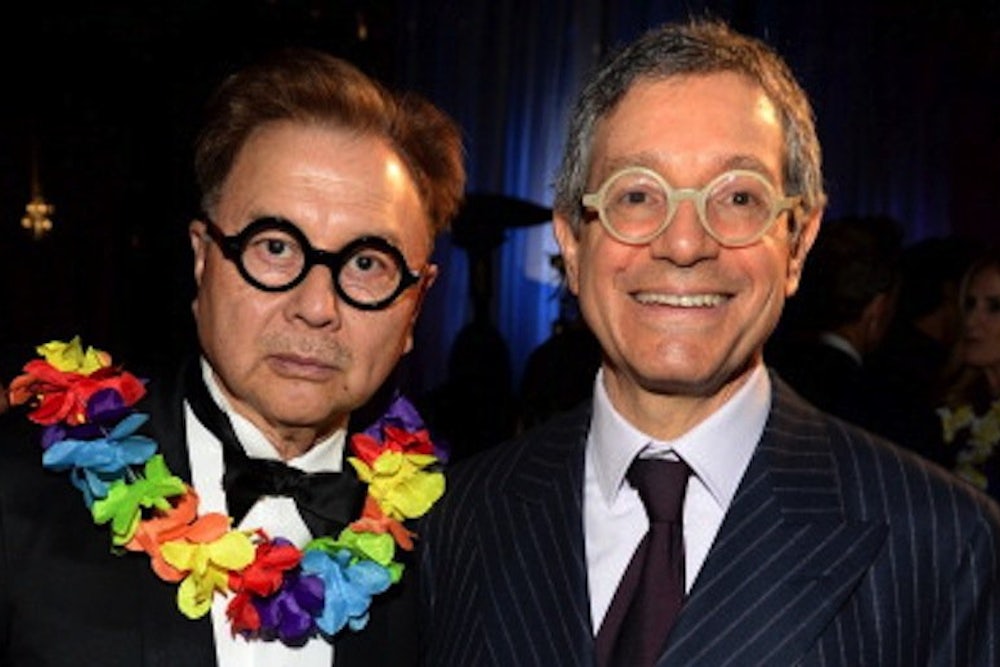Like all politics, art world politics can be addictive. And all political junkies, including the art world junkies, live in their own manic bubble, where personalities trump policies and short-term gains and losses obscure the bigger picture. Let’s try and remember this now, as we contemplate the announcement that Jeffrey Deitch, the New York art world impresario with the nutty professor demeanor, has resigned after a rocky three years as director of the Museum of Contemporary Art in Los Angeles. Deitch’s entire tenure in L.A. was tailor-made for the art world junkies. He was brought in by the real estate mogul Eli Broad as part of a cure for MOCA’s acute financial distress. He produced such predictably Deitchian street savvy gestures as a show dedicated to the history of graffiti art. And his antics precipitated the resignation of artists from the MOCA board, including Ed Ruscha and John Baldessari, who nobody ever accused of being enemies of pop culture. In the blogosphere, Deitch was a sensation and a scandal, especially the Deitch who brought in Marina Abramović to mastermind a MOCA gala with live nude models as centerpieces at the dinner. Was he a sensation because he was a scandal? Or was it vice versa?
Deitch’s rocky tenure at MOCA was never really about Jeffrey Deitch. It was a symptom of a larger problem, namely the shift in nearly all our museums from a focus on long-range scholarly, curatorial, and educational functions to an obsession with the box office. Of course cultural institutions demand a steady financial hand, which was clearly lacking at MOCA, where long before Deitch’s arrival the endowment was being used to cover operating expenses. But in a country as wealthy as ours—and this is an enormously wealthy country, with or without a recession—the deeper question is why cultural institutions so often seem to be less secure today than they were a generation ago. A large part of the problem, so I have come to believe, is that people in positions of influence in the cultural sphere have become almost ashamed about insisting on the critical importance of a museum’s long-range scholarly, curatorial, and educational functions. It is so much easier to tickle a wealthy donor’s desire for quick gratification with a show dedicated to graffiti art or a gala masterminded by Abramović.
Only last summer, Deitch told the L.A. Times that the people he wanted to bring into MOCA were the fun-loving crowd who “hear that there’s a terrific new fashion store that’s very cool—they want to go there.” Now in a sense that’s no different from the savvy audience that Alfred H. Barr, Jr. wanted to attract to the Museum of Modern Art 75 years ago. The difference—and it is a critical difference—is that once Barr had people in the museum, he insisted that they meet the challenge of Picasso, Matisse, and Mondrian’s most difficult art. Deitch is content to embrace a target audience that doesn’t, as he explained, “differentiate between … cultural forms.” And here is the heart of the problem. If museums are developing an audience that sees no difference between a cool new fashion store and an art museum, they will eventually—and probably sooner rather than later—find themselves at the mercy of a constituency that actually believes there is no difference. And in the end the funders—who tend to begin as members of the audience—will side with the audience they have created. It is already happening. Some people are wondering why we shouldn’t just stick with the cool new fashion store, which is meant to turn a profit and will close if it doesn’t?
Of course there are museums that still insist on solid intellectual foundations. At the Museum of Modern Art the situation has actually improved in recent years, with the formidable scholarly exhibitions mounted by Barry Bergdoll and Leah Dickerman, including Bergdoll’s ravishing exploration of the nineteenth-century architect Henri Labrouste last spring and an opulent and challenging exhibition devoted to Le Corbusier this summer. But all too often now, museums are focused not on the best they believe they can give to the public but on some market-driven theory about what the public wants. It rarely works in Hollywood, so why should it work in the museums? Last summer, when there was already much talk in L.A. about whether Deitch would go or stay, the chairwoman and chairman of the MOCA board said that there was “a paradigm shift happening today, and both art and its audience are changing.” Deitch, they explained, “came here to bring us into this new era.” To me that sounds like a cleaned-up, institutionalized version of the same old art world political junkie talk, with its emphasis on short-term gains.
The Museum of Contemporary Art has significant holdings in mid-century Abstract Expressionist painting and sculpture. What precisely do the ladies and gentlemen on the board think about that? We all know that our understanding of art changes over time, but what about art’s unchanging value? Why is everybody so afraid to talk about that? What is contemporary artistic experience if it is not grounded in the artistic experiences of the past? Jeffrey Deitch epitomizes the fashion forward approach. Now that he has fast-forwarded himself right out of MOCA, the time has come to revisit the insidious assumptions that put him there in the first place.
Jed Perl is the art critic for The New Republic.
